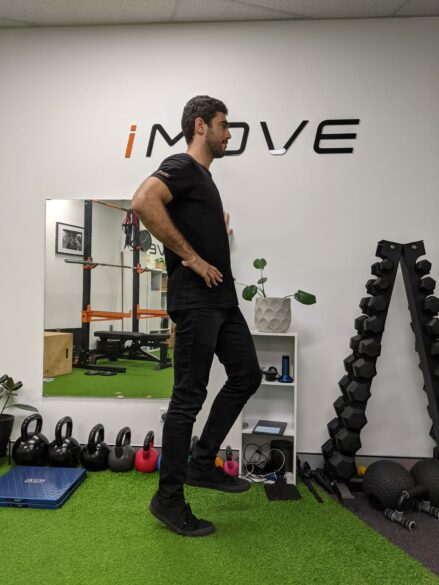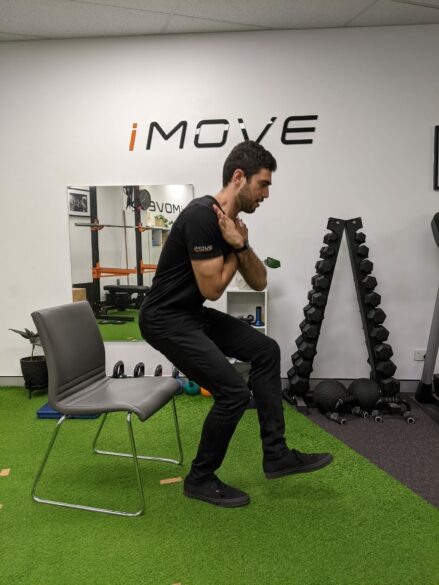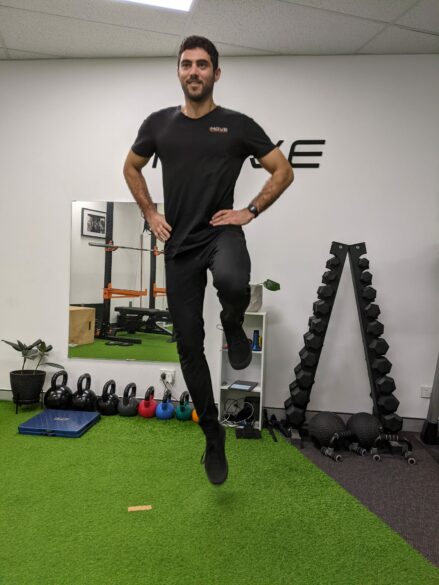Running offers important benefits for both your physical and mental health. Without proper preparations and technique, however, the “runners high” can deliver some crushing lows.
As both a mum and a runner, I have experienced this rollercoaster first-hand, and wish I’d sought some professional advice before attempting to return to running post-baby.
If you’re new to running, a new mum or already an experienced runner (or mum!) then you’ll thank yourself later for following the below helpful advice from iMove Physiotherapy.
iMove has been specialising in helping runners perform without injury for nearly a decade. Their mission is to keep you running stronger, longer and injury-free.
The following tips and tricks from iMove physiotherapist Josh Farbenblum will help you maximise your running experience so whether you’re returning to running or just starting out, you’ll be set-up for success when you next hit the pavement (or the trails)!
Are you ready to run?
Most people think running comes naturally, like breathing, but there’s actually a lot of skill, technique and strength needed to run efficiently and avoid injury. If you have had an injury or have issues with leaking, we can help guide you back to running in a safe and comfortable way.
Running assessments
iMove perform in-depth assessments that analyse your running form/technique and running efficiency, including:
- cadence
- vertical oscillation
- flight/ground contact time
- leg stiffness
- overstriding
This can seem very technical, but don’t worry! You’ll only receive 1-2 simple cues to work on at a time so as to not overwhelm you while learning.
iMove also uses special technology to analyse muscle strength and power in order to help you work out which areas to focus on to optimise your running experience. Lastly, an iMove physiotherapist will check out what kind of shoes you’re running in and guide you in how to choose the right shoes for your feet.
The one thing all runners need and most don’t do!
Forget fancy shoe technology, adding in a couple of strength sessions a week can improve your running economy by up to 8%! Not only that, but it will reduce running injuries by up to 50%! So it is definitely worth investing the time.
Here are some examples of strength exercises you can perform to boost your running:
Single leg calf raises
Your calves take 6-8 times your body weight with every step while running so it’s really important they’re strong enough to handle that!
Standing on one leg, hold a wall for balance and lift your heel up off the ground as high as you can and return, one second up and one second down
Avoid cheating by bending the knee or leaning forward
At a minimum you should be able to perform 20 repetitions, but as a runner you should be at around 25-30!

Single leg sit to stand
Running also requires strong glutes, quads and hamstrings as well having excellent control on a single leg.
Stand up from a chair on just one leg and sit back down (with control)
Keep your arms folded across your chest or behind your back to avoid cheating by using them
You should be able to perform at least 10

Hopping on the spot for 30 seconds
This exercise is important for building strong tendons.
Perform this as though you were skipping rope but on one leg
It should be pain-free (and leaking free!)
Cadence and how it can help
Your cadence is how many steps you take in one minute, which is different from the speed you run. By changing your cadence we can shift the stresses in specific areas to help relieve pain. For example, increasing your cadence by 5% reduces the stress on your knees by 20%!
Training advice
This is something even experienced runners need help with. Running injuries are always a result of training errors that could easily have been avoided. iMove have worked extensively with runners and are well-positioned to help you determine an optimal training plan and schedule.
What about leaking…?
We know, it’s embarrassing and can be a real barrier to mums who want to just get out there and run. Fortunately, progressive pelvic floor training can help with this so that you can run without worry. Pelvic floor training is more than just kegels. Once your pelvic floor muscles are strong, we need to progress on to coordination with breathing and core bracing and then pressure management with exercise. Leaking can still occur even with a strong pelvic floor if you can’t coordinate your core and pelvic floor while running or if you can’t control your abdominal pressure. Physios can help train all of these components and help you run without leaking.
How can I get started?
Seek out the best running assessments, training tips, strength and pelvic floor training advice before you set out on your next run so that you can avoid the pitfalls of injury.
Simply visit the iMove website to book an appointment with a physio at iMove Miranda now.
Thanks again to Josh Farenblum from iMove for sharing his advice with us, and if I can leave new mums who are heading out running with one last tip of my own it would be to wear a crop-top over your sports bra!

